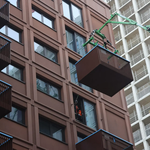While VIA absolutely should aim to concentrate service onto the North Mainline (NML) in the long term for the reasons you state here, I also think it could make sense for VIA to temporarily leave the NML in the short term.
In the business as usual scenario (the funded option from the Kitchener Expansion business case), we will have a single-tracked line with passing sidings from Kitchener to Georgetown, and a largely triple-tracked Halton sub without a grade separation. In this scenario CN has agreed to 1 thru GO train per hour, plus occasional extra trains representing a second train per hour (i.e. VIA trains and peak-period extra GO trains).
Off-peak service pattern: Phase 1 (Business as usual).
View attachment 338510View attachment 338507
View attachment 338511
I have taken some liberties with the exact stopping patterns, but the number of trains per hour on each segment matches the Metrolinx business case document.
Relative to this scenario, it would be quite easy to simply extend the hourly GO service to London by upgrading the Kitchener-London segment with a higher line speed and two additional passing sidings. No additional capacity would be required between Kitchener and Toronto, avoiding the long lead times for items such as double-tracking the Guelph subdivision or building the rail-to-rail grade separation with CN.
Off-peak service pattern: Phase 2 (GO to London)
View attachment 338509View attachment 338513
With hourly GO service, it would be difficult to also run fast VIA service along the single-tracked lines. In this scenario there also isn't any capacity for frequent VIA service east of Kitchener (yet). Instead VIA would leave the corridor entirely and coordinate their schedules with GO to facilitate transfers at London.
Concept for a coordinated timetable if GO departs at :35 past the hour:
View attachment 338506
Of course the above is merely an interim situation. Once a grade separation is built in the Halton subdivision and the Guelph subdivision is double tracked, VIA could return to the corridor with fast hourly intercity service, complementing GO's regional service.
Off-peak service pattern: Phase 3 (Full HFR buildout)
View attachment 338515View attachment 338512




